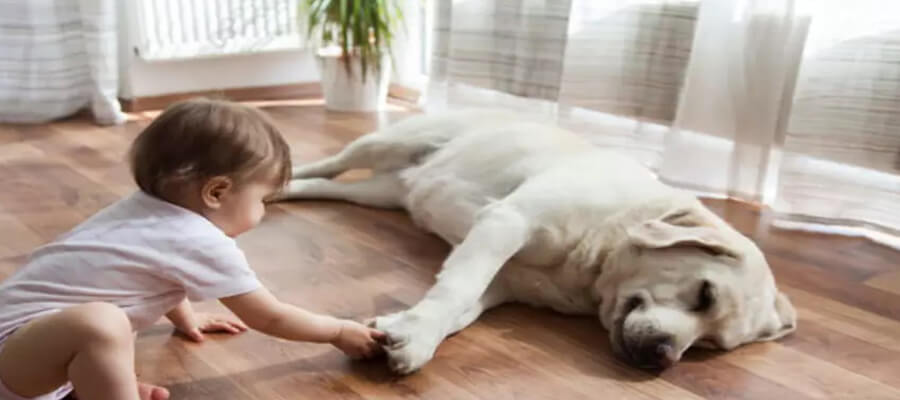
How to Teach Your Puppy to Be Gentle
"How to Teach Your Puppy to Be Gentle: Effective Training Techniques"
Introduction
As a new puppy owner, one of your primary goals is to foster positive behaviors in your furry friend. Teaching your puppy to be gentle is essential for ensuring their interactions with people, other pets, and the environment are safe and enjoyable. Puppies are naturally playful and curious, which can sometimes lead to overly enthusiastic behavior, such as jumping, biting, or nipping. In this guide, we’ll explore effective techniques to teach your puppy to be gentle, promoting a harmonious relationship between you and your beloved companion.
Understanding Why Puppies Can Be Overly Rough
Before diving into training techniques, it’s important to understand why puppies may display rough behavior:
- Natural Instincts: Puppies are naturally playful and use their mouths to explore the world. Biting and nipping are normal behaviors during play.
- Lack of Training: Young puppies often don’t yet understand how to control their bite strength or the concept of being gentle. They need guidance to learn appropriate behaviors.
- Excess Energy: Puppies have abundant energy and may become overly excited during playtime, leading to rough behavior.
- Socialization Needs: Puppies that haven’t been properly socialized may struggle to understand how to interact gently with other dogs and people.
Techniques to Teach Your Puppy to Be Gentle
-
Establish Clear Boundaries
- Identify Rough Behavior: Recognize what behaviors you want to curb, such as biting, jumping, or overly aggressive play.
- Set Boundaries: Use consistent verbal cues, such as “gentle” or “easy,” to signal when your puppy needs to modify their behavior.
-
Use Positive Reinforcement
- Reward Gentle Behavior: Whenever your puppy interacts gently—whether with you, other people, or toys—immediately praise them and offer treats. This reinforces the desired behavior.
- Avoid Punishment: Instead of scolding your puppy for rough behavior, redirect their energy to a more appropriate outlet. Punishment can lead to fear and anxiety, which may worsen the behavior.
-
Engage in Controlled Play
- Supervised Playtime: During play sessions, closely monitor your puppy’s interactions. If they become too rough, stop the play session momentarily. This teaches them that rough behavior leads to the end of fun.
- Use Appropriate Toys: Provide safe chew toys for your puppy to bite and nibble on. This allows them to engage their natural chewing instincts without being rough with people.
-
Teach “Leave It” and “Drop It” Commands
- Training Sessions: Use short, frequent training sessions to teach commands like “leave it” and “drop it.” Start with low-value items and gradually work your way up to more appealing toys or treats.
- Gentle Retrieval: When your puppy retrieves a toy, ask them to “drop it” before offering a treat. This encourages them to release items gently instead of tugging or wrestling.
-
Practice Calm Behavior
- Settle Time: Teach your puppy to settle down after playtime. Use commands like “sit” or “down” and reward them for being calm. This helps them learn to relax after periods of excitement.
- Create a Calm Environment: Encourage a peaceful atmosphere at home, using soothing music or low lighting to help your puppy unwind.
-
Socialization with Other Dogs
- Controlled Interactions: Arrange playdates with other well-mannered dogs. Supervised socialization can help your puppy learn appropriate play styles and reinforce gentle behavior through peer interactions.
- Puppy Classes: Consider enrolling in puppy training classes where your puppy can socialize with other dogs in a controlled environment. Professional trainers can provide guidance and techniques to promote gentle behavior.
-
Redirect Excess Energy
- Exercise and Mental Stimulation: Ensure your puppy receives regular physical and mental exercise through walks, playtime, and interactive toys. A tired puppy is less likely to engage in rough behavior.
- Use Enrichment Activities: Incorporate puzzle toys or scent games that encourage problem-solving, providing mental stimulation to keep your puppy engaged.
Signs of Progress
As you implement these techniques, look for signs that your puppy is learning to be gentle. Positive indicators include:
Essentials for Your Newly Adopted Pet
Welcoming a shelter pet into your life is a beautiful journey. Here are some handpicked items to help your new friend feel safe, loved, and right at home:
- Reduced nipping and biting during play
- Ability to play calmly with toys and other pets
- Responsive to verbal cues like “gentle” or “easy”
- Increased self-control during exciting situations
Conclusion
Teaching your puppy to be gentle is an essential part of their development and helps establish a loving bond between you and your furry friend. By using positive reinforcement, setting clear boundaries, and providing opportunities for controlled play, you can guide your puppy toward appropriate behaviors. Remember that patience and consistency are key—puppies learn at their own pace. With your love and guidance, your puppy will grow into a well-mannered companion, ready to share gentle moments with you and those around them.
Affiliate Products
We may earn a small commission when you shop through our links — it helps us keep sharing love and care for every dog out there, at no extra cost to you.
Up to 75% Discount

Dog Collar with Health Monitoring
BUY NOW »
Up to 55% Discount

Luxury Faux Furhuge Napping Bed
BUY NOW »

